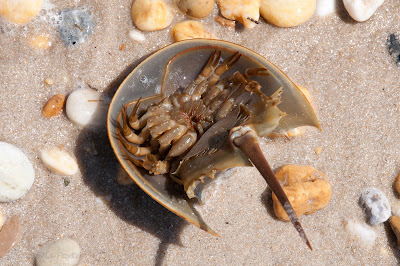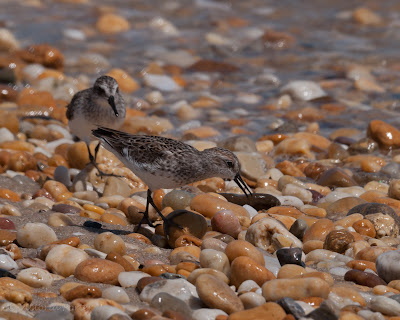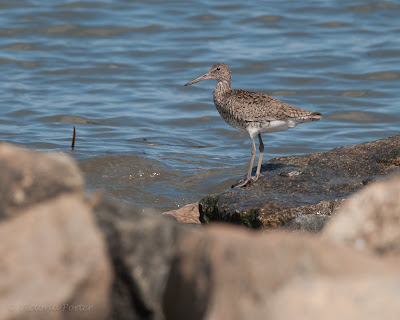Although the first image is crabs, crabs and more crabs, the rest of this post (scroll down) will be birds who love to dine on their eggs. If I haven't missed the cutoff, I'll be posting this to
World Bird Wednesday shortly. (am posting here instead of my
other blog because this blog is where I post when the images tell more of a story than I want to tell on my photo blog... am WAY behind returning visits from last week but will be catching up before the weekend)
My cousin Jane, friends and myself went to Slaughter Beach, Delaware (and a few nearby spots) to view the annual mass breeding of the Horseshoe Crabs. They breed and come to shore, riding high tide in to the beach, in great numbers to deposit and fertilize vast numbers of protein rich eggs over a two week period (+/- a few days) every May. One of the best places to view this spectacle is Slaughter Beach on the Delaware Bay.
Blue Ridge Workshops provided a photography instructor and a naturalist guide for our "day at the beach" and some of us even got to try out HUGE lenses on our Nikon cameras. I failed miserably to get the hang of using a 600mm prime lens fitted with a 2x converter and think my Sigma 120-400mm zoom is much easier to use! (also would need someone to carry the rig for me if I were to use such a huge and heavy lens assembly) Too bad I forgot to pack the 1.4x converter for my Sigma lens.
And now for a few of the birds who dine on the eggs laid by the crabs...
Sanderlings with a few Ruddy Turnstones mixed in (
look closely and you might spot the Turnstones)
The foreground Sanderling has a crab egg in its mouth. (
larger view)
Laughing Gull, aptly named if you've ever heard them! Note Horseshoe Crabs on the beach too.
Willet with tail of Horseshoe Crab visible, sticking out of the water on the left.
A few Ruddy Turnstones with some blurry gulls on the water behind them.

















